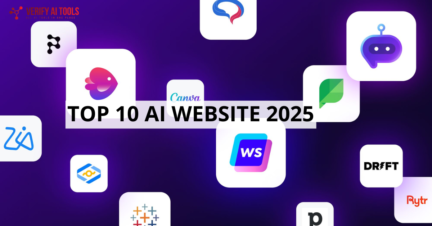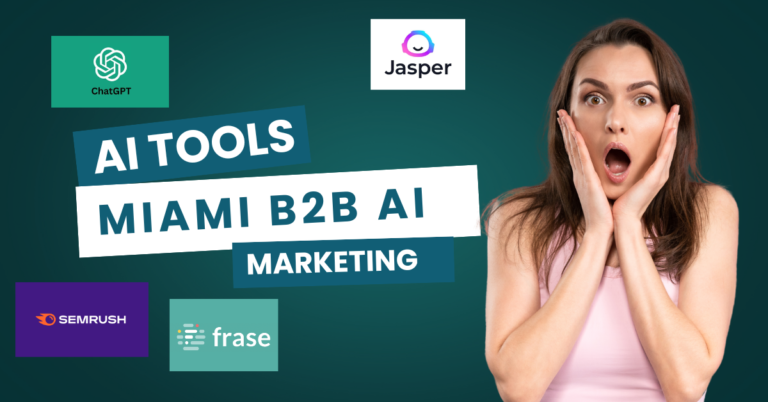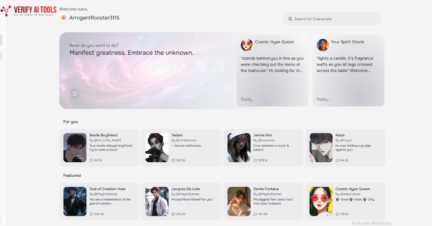In the rapidly evolving world of artificial intelligence, Character AI has emerged as a groundbreaking technology that enables users to interact with AI-driven characters in a conversational manner. These characters can range from historical figures and fictional personas to entirely original creations, offering a unique blend of entertainment, education, and companionship. However, like any technology, Character AI is not immune to downtime—periods when the service is unavailable or underperforming. This blog post delves into the intricacies of Character AI downtime, exploring its causes, impacts, and potential solutions.
What is Character AI?
Before diving into the specifics of downtime, it’s essential to understand what Character AI is. Character AI refers to a subset of artificial intelligence technologies designed to simulate human-like interactions through conversational agents. These agents, or “characters,” are programmed with specific personalities, knowledge bases, and behavioral traits, allowing them to engage users in meaningful and contextually relevant dialogues.
Character AI platforms leverage advanced natural language processing (NLP) algorithms, machine learning models, and vast datasets to generate responses that mimic human conversation. Users can interact with these characters for various purposes, including entertainment, education, customer service, and even therapeutic applications.
The Importance of Uptime in Character AI
Uptime, the measure of time a system is operational and available for use, is a critical metric for any online service, including Character AI. High uptime ensures that users can access and interact with their chosen characters whenever they need to, fostering trust and satisfaction. Conversely, downtime—periods when the service is unavailable—can lead to user frustration, loss of engagement, and potential revenue loss for service providers.
Given the interactive and real-time nature of Character AI, maintaining high uptime is particularly crucial. Users expect seamless and immediate responses from their AI counterparts, and any interruption can disrupt the user experience, diminish the perceived value of the service, and harm the platform’s reputation.
Causes of Character AI Downtime
Character AI downtime can stem from a variety of factors, ranging from technical issues to external influences. Understanding these causes is the first step toward mitigating their impact and ensuring a more reliable service.
- Server Overload and Resource Constraints
One of the most common causes of downtime is server overload. Character AI platforms rely on powerful servers to process user requests, run complex algorithms, and generate responses in real-time. When the number of concurrent users exceeds the server’s capacity, the system may become overwhelmed, leading to slowdowns or complete outages.
Resource constraints, such as insufficient memory, processing power, or bandwidth, can exacerbate this issue. As Character AI models become more sophisticated and demand for the service grows, the strain on servers increases, making them more susceptible to overload.
- Software Bugs and Glitches
Software bugs and glitches are another prevalent cause of downtime. Character AI platforms are built on intricate software architectures that integrate multiple components, including NLP models, dialogue management systems, and user interface elements. Any flaw or inconsistency in the code can lead to unexpected behavior, crashes, or service interruptions.
Regular software updates and patches are essential to address known issues and improve system stability. However, the introduction of new features or updates can sometimes introduce new bugs, creating a delicate balance between innovation and reliability.
- Network Issues and Connectivity Problems
Character AI services are typically accessed over the internet, making them vulnerable to network-related issues. Problems such as DNS failures, routing errors, or internet service provider (ISP) outages can prevent users from connecting to the platform, resulting in downtime.
Additionally, the quality of the user’s internet connection can impact their experience. Slow or unstable connections may lead to delayed responses, timeouts, or incomplete interactions, even if the Character AI service itself is functioning correctly.
- Cybersecurity Threats and Attacks
Cybersecurity threats, including Distributed Denial of Service (DDoS) attacks, can cause significant downtime for Character AI platforms. In a DDoS attack, malicious actors flood the service’s servers with an overwhelming volume of traffic, rendering them unable to respond to legitimate user requests.
Other cybersecurity threats, such as malware infections, data breaches, or unauthorized access, can also disrupt service availability. Ensuring robust security measures, including firewalls, intrusion detection systems, and regular security audits, is crucial to safeguarding against these threats.
- Hardware Failures
Hardware failures, such as server crashes, storage device malfunctions, or power outages, can lead to downtime. Character AI platforms rely on a combination of physical and virtual hardware to operate, and any failure in this infrastructure can disrupt service.
Redundancy and failover mechanisms, such as backup servers and uninterruptible power supplies (UPS), can help mitigate the impact of hardware failures. However, these measures require careful planning and investment to implement effectively.
- Maintenance and Upgrades
Scheduled maintenance and system upgrades are necessary to ensure the long-term stability and performance of Character AI platforms. However, these activities often require taking the service offline temporarily, resulting in planned downtime.
While planned downtime is typically communicated to users in advance, it can still be inconvenient, especially for those who rely on the service for time-sensitive interactions. Balancing the need for maintenance with user expectations is a key challenge for service providers.
Impacts of Character AI Downtime
The consequences of Character AI downtime extend beyond mere inconvenience. Depending on the severity and duration of the outage, downtime can have far-reaching effects on users, businesses, and the broader ecosystem.
- User Frustration and Loss of Trust
For users, downtime can be a source of frustration, particularly if they are in the middle of an important conversation or task. Repeated or prolonged outages can erode trust in the platform, leading users to seek alternative solutions or abandon the service altogether.
In the context of educational or therapeutic applications, downtime can be particularly detrimental. Students relying on Character AI for learning or individuals using the service for mental health support may find their progress disrupted, potentially undermining the effectiveness of the intervention.
- Revenue Loss for Service Providers
For businesses offering Character AI services, downtime can translate directly into revenue loss. Subscription-based models, in particular, are vulnerable to churn when users experience frequent outages. Additionally, downtime can disrupt advertising revenue, e-commerce transactions, or other monetization strategies tied to the platform.
In the case of enterprise clients, downtime can lead to contractual penalties, loss of business opportunities, and damage to professional relationships. Ensuring high availability is therefore not just a technical challenge but a business imperative.
- Reputational Damage
Reputational damage is another significant impact of downtime. In the age of social media and online reviews, negative experiences can quickly spread, tarnishing the platform’s image and deterring potential users. A single high-profile outage can overshadow months of reliable service, making it difficult to regain user confidence.
Reputational damage can also affect partnerships and collaborations. Other businesses, developers, or content creators may hesitate to integrate with or promote a platform known for its instability, limiting growth opportunities.
- Operational Disruptions
For organizations that rely on Character AI as part of their operations, downtime can cause internal disruptions. Customer service teams using AI-driven chatbots, for example, may struggle to handle inquiries during an outage, leading to longer response times and decreased customer satisfaction.
Similarly, content creators or educators who incorporate Character AI into their workflows may face delays or interruptions, impacting their productivity and output. The ripple effects of downtime can thus extend beyond the immediate users to affect entire ecosystems.
Solutions to Mitigate Character AI Downtime
Addressing Character AI downtime requires a multifaceted approach that combines technical, operational, and strategic measures. By proactively identifying potential issues and implementing robust solutions, service providers can enhance reliability and minimize the impact of downtime.
- Scalable Infrastructure
Investing in scalable infrastructure is crucial to handling increasing user demand and preventing server overload. Cloud-based solutions, such as Amazon Web Services (AWS), Microsoft Azure, or Google Cloud Platform, offer flexible and scalable resources that can be adjusted based on traffic patterns.
Load balancing, which distributes incoming requests across multiple servers, can also help manage high traffic volumes and prevent any single server from becoming a bottleneck. Additionally, Content Delivery Networks (CDNs) can improve response times by caching content closer to users, reducing latency and strain on central servers.
- Robust Monitoring and Alert Systems
Implementing comprehensive monitoring and alert systems enables service providers to detect and respond to issues in real-time. Tools like Nagios, Prometheus, or Datadog can track server performance, network health, and application metrics, providing early warnings of potential problems.
Automated alerts can notify IT teams of anomalies, such as sudden spikes in traffic, unusual error rates, or hardware failures, allowing for swift intervention. Proactive monitoring not only helps prevent downtime but also aids in diagnosing and resolving issues more efficiently when they occur.
- Regular Software Testing and Updates
Regular software testing, including unit tests, integration tests, and stress tests, is essential to identifying and fixing bugs before they impact users. Continuous integration and continuous deployment (CI/CD) pipelines can streamline the process of testing and deploying updates, ensuring that new code is thoroughly vetted before going live.
In addition to addressing bugs, software updates can introduce performance optimizations, security patches, and new features that enhance overall system stability. However, it’s important to balance the frequency of updates with the need for reliability, as overly frequent changes can introduce instability.
- Cybersecurity Measures
Protecting against cybersecurity threats is a critical component of minimizing downtime. Implementing robust security measures, such as firewalls, encryption, and multi-factor authentication, can help safeguard the platform from attacks and unauthorized access.
Regular security audits and penetration testing can identify vulnerabilities and ensure that defenses are up to date. In the event of a DDoS attack, having a mitigation plan in place, such as traffic filtering or leveraging a DDoS protection service, can help maintain service availability.
- Redundancy and Failover Mechanisms
Building redundancy into the system architecture can help mitigate the impact of hardware failures and other disruptions. Redundant servers, storage devices, and network connections ensure that if one component fails, others can take over without interrupting service.
Failover mechanisms, such as automatic server switching or database replication, can further enhance reliability. Geographic redundancy, where data and services are distributed across multiple data centers in different locations, can protect against regional outages or natural disasters.
- Effective Communication and Support
Transparent communication with users during downtime is essential to maintaining trust and managing expectations. Providing timely updates on the status of the service, the cause of the outage, and the estimated time for resolution can help alleviate user frustration.
Offering robust customer support, including live chat, email, or phone assistance, ensures that users have a channel to seek help and report issues. A well-documented knowledge base or FAQ section can also empower users to troubleshoot common problems on their own.
- User Education and Best Practices
Educating users on best practices for interacting with Character AI can help reduce the likelihood of issues that may contribute to downtime. For example, encouraging users to maintain stable internet connections, avoid overloading the system with excessive requests, and report bugs or anomalies can contribute to a smoother experience.
Providing clear guidelines on system requirements, supported devices, and optimal usage scenarios can also help users make the most of the service while minimizing strain on the platform.
Conclusion
Character AI represents a transformative technology with the potential to revolutionize how we interact with machines and each other. However, like any technology, it is not without its challenges. Downtime, whether caused by server overload, software bugs, network issues, or cybersecurity threats, can have significant consequences for users, businesses, and the broader ecosystem.
By understanding the causes and impacts of downtime and implementing proactive solutions, service providers can enhance the reliability and resilience of Character AI platforms. Scalable infrastructure, robust monitoring, regular software updates, cybersecurity measures, redundancy, effective communication, and user education are all critical components of a comprehensive strategy to minimize downtime.
As Character AI continues to evolve and integrate into various aspects of our lives, ensuring high availability and a seamless user experience will be paramount. By addressing downtime head-on, we can unlock the full potential of this exciting technology and create a future where AI-driven characters are not just intelligent but also dependable and accessible to all.









Leave a Comment